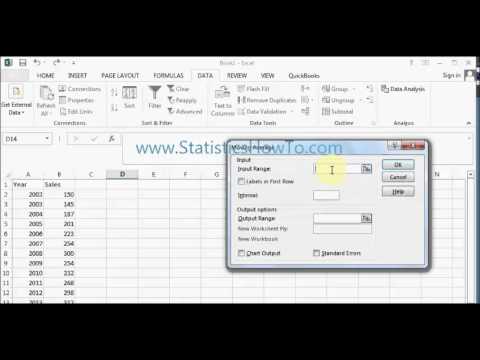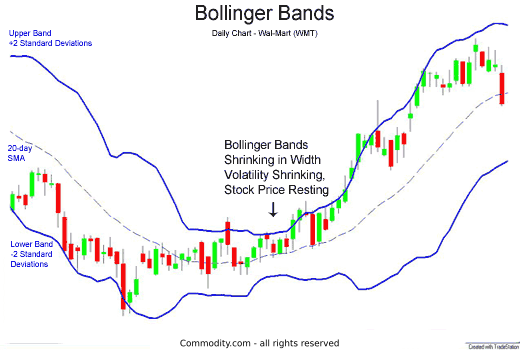Contents:


The post-closing trial balances can be seen in ‘Step 7’ above as one of the financial statements we created. Cash accounting requires transactions to be recorded when cash is either received or paid. Double-entry bookkeeping calls for recording two entries with each transaction in order to manage a thoroughly developed balance sheet along with an income statement and cash flow statement. The second step of the accounting cycle steps is to use journal entries for each transaction. Journal entries must be entered in full compliance with double-entry accounting guidelines (or double-entry bookkeeping).
- Once the company has made all the adjusting entries, it creates financial statements.
- Learn the eight steps in the accounting cycle process to complete your company’s bookkeeping tasks accurately.
- The third step in the accounting cycle is to post entries into the journal for the analyzed transactions.
- Closing entries offset all of the balances in your revenue and expense accounts.
- Their main objective is to match incomes and expenses to the relevant accounting periods.
Once you’ve created an adjusted trial balance, assembling financial statements is a fairly straightforward task. This new trial balance is called an adjusted trial balance, and one of its purposes is to prove that all of your ledger’s credits and debits balance after all adjustments. Journal entries are usually posted to the ledger as soon as business transactions occur to ensure that the company’s books are always up to date. There are lots of variations of the accounting cycle—especially between cash and accrual accounting types. This version of the trial balance should have zero account balances for all revenue and expense accounts. The third group is the period-end processing required to close the books and produce financial statements.
Turn business receipts into data & deductibles
The primary objective of the accounting cycle in an organization is to process financial information and to prepare financial statements at the end of the accounting period. After all, the more organized your process, the faster you can record transactions and get back to business. The first step in the accounting cycle entails consolidating all the information you have on each transaction that occurred during a specific period. If you are using the cash method of accounting, you will record transactions the moment cash changes hands. Apart from identifying errors, this step helps match revenue and expenses when accrual accounting is used. Any discrepancies should be addressed by making adjustments, which happens in the next step.
Title Vacant : Office of the New York City Comptroller Brad Lander – New York City Comptroller
Title Vacant : Office of the New York City Comptroller Brad Lander.
Posted: Tue, 06 Dec 2022 08:00:00 GMT [source]
As mentioned above, journal entries get entered into the system chronologically or in the order in which they happen. However, the general ledger, updated in Step 3, is done by account rather than in chronological order. Accounts refer to how the business buckets transactions such as cost of goods sold, investments, taxes paid, and many others. Journal entries hold debits and credits in chronological order allowing businesses to reference the system should a question arise. In addition, the transactions will have the date, amount, and location for future reference.
Example of Accounting Cycle with Excel Examples
The general ledger provides an account-by-account breakdown of all accounting activities. It may be necessary to adjust the trial balance, either to correct errors or to create allowances of various kinds, or to accrue for revenues or expenses in the period. The steps required for individual transactions in the accounting process are noted below. The balance sheet is a depiction of financial position of the business entity. It displays the assets owned by the entity, liabilities owed to creditors and owner’s capital or equity. The journal records both sides of the transaction recorded by the source document.
An accounting cycle starts when a business transaction takes place. If there are no transactions, there won’t be anything to keep track of. Companies will have many transactions throughout their accounting cycle. The nature of transactions may include sales, purchase of raw materials, debt payoff, acquisition of an asset, payment of any expenses etc. The sequential process of the accounting cycle ensures that the financial statements a company produces are consistent, accurate and conform to official accounting standards .

It is also important for the valuation of a company and for tax reporting. The purpose of the accounting cycle is to ensure that all financial transactions are accounted for in accordance with strict standards. In cash accounting, transactions are recorded based on when cash is paid or received. Office supplies with an original cost of $5,000 were unused at the end of the period. Office supplies having an original cost of $17,000 are shown on the unadjusted trial balance. The following example will demonstrate the recording of the transactions we identified in the first step of the accounting cycle.
Relax—run payroll in just 3 easy steps!
Statement of retained earnings – This statement shows the effect of any profit or loss on the retained earnings of a company for a specific time period. Picture Perfect’s bookkeeper pours himself a coffee, puts on his reading glasses and gets to work. He compares the balance of debits to credit and is surprised to find a $100 discrepancy. On the same day Picture Perfect sold the $350 frame, it sold another two frames for $200 apiece. The total of the three sales is detailed in the AR subledger and posted to the GL.
The accounting cycle records and analyzes accounting events related to a company’s activities. Accruals make sure that the financial statements you’re preparing now take those future payments and expenses into account. In the capable hands of the Irvine Bookkeeping Team, your financial records will be in good shape. Our team of women is detail-oriented and will record all of your company’s transactions and records precisely to provide you with the most reliable financial data. After closing, the accounting cycle starts over with a new reporting period.
Plastics tsunami: Can a landmark treaty stop waste from choking the … – Nature.com
Plastics tsunami: Can a landmark treaty stop waste from choking the ….
Posted: Tue, 22 Nov 2022 08:00:00 GMT [source]
A https://1investing.in/’s accounting period depends on several factors, including its specific reporting requirements and deadlines. Many companies like to analyze their financial performance every month, while others focus on quarterly or annual reports. The general ledger breaks down the financial activities of different accounts so you can keep track of various company account finances.
Once you’ve converted all of your business transactions into debits and credits, it’s time to move them into your company’s ledger. Through the accounting cycle (sometimes called the “bookkeeping cycle” or “accounting process”). Depending on the business, the accounting period may be monthly, quarterly, or annual. The trial balance shows the company how much money is in each account and if there are any problems.
Using the accounting cycle for your finances
The accounting cycle is a circular process, and as long as a company is in business it will be active. An Adjusted Trial Balance is a list of the balances of ledger accounts which is created after the preparation of adjusting entries. Finance Pal is very affordable for what they do and I get a lot for my money. They are large so they have a lot of resources to get things done in a timely way. Finance Pal does all our accounting and bookkeeping services from managing our Xero accounting software account to reconciling bank statements to doing our tax returns.
If you use a single-present value formula accounting system (i.e., cash-basis accounting), you can still use the accounting cycle to record entries, close your books, etc. But, you don’t need to follow the steps that require you to check entries for debits and credits. The last step in the accounting cycle is to make closing entries by finalizing expenses, revenues and temporary accounts at the end of the accounting period. This involves closing out temporary accounts, such as expenses and revenue, and transferring the net income to permanent accounts like retained earnings. The balance sheet and income statement depict business events over the last accounting cycle.
A sustainable finance policy engagement handbook Thought … – PRI
A sustainable finance policy engagement handbook Thought ….
Posted: Mon, 28 Nov 2022 08:00:00 GMT [source]
Business owners do not start their businesses to spend hours doing accounting. Yet, they must know the basics of accounting and bookkeeping if they want their business to thrive. The larger the company, the more transaction types are possible—though small businesses also find bountiful transactions to log. Other benefits to using the accounting cycle include gaining a better understanding of business operations and improving decision-making abilities. Help you account for the transactions you forgot about while bookkeeping—things like business purchases on your personal credit.
What is the Revenue Accounting Cycle?
In the general journal, the transactions are recorded as a debit and a credit in monetary terms with the date and short description of the cause of the particular economic event. Identifying the transactions from the events is the first step in the accounting process. Trial balance, which happens at the end of the accounting period. If you need a bookkeeper to take care of all of this for you, we are here to help.
When errors are found, the accounting cycle calls for a reconciliation to be performed to ensure all transactions balance. Temporary adjusting accounts help accountants restore balance in the debits and credits while providing more time to find the error. The entire exercise calls to find errors, correct the errors, and close temporary adjusting accounts, all before the end of the trial balance period. The fourth step occurs at the end of the accounting period, where an unadjusted trial balance is created. This is done by balancing credits and debits in one place, such as a table, which follows the double-entry accounting philosophy.

Automation eliminates the need for a significant amount of manual intervention, therefore expediting the process so businesses can close their books with confidence. The accounting cycle is a multistep process used by businesses to create an accurate record of their financial position, as summarized on their financial statements. As a business grows, its number of daily financial transactions increases — as does the potential for errors, if recording each transaction manually. This automation saves accounting teams and bookkeepers time, reduces business costs and ensures more accurate financial reporting.
- This may include ratio analysis to help explain how pieces of information relate to one another.
- The adjusted trial balance is used to create financial statements such as The Income statement, The Balance sheet and the Statement of Cash Flows.
- Accounting is integral to the success of any business, regardless of size.
- The accounting cycle is the process that involves identifying, analyzing, and recording a company’s accounting data in an effort to produce consistent and accurate financial statements.
The purpose of the accounting cycle is to ensure that businesses have accurate and up-to-date information about their financial performance. To gain a better understanding of this, consider an error in the general ledger. This entry needs to reference where the error exists so that anyone reviewing it can verify it for accuracy.
An AccountantAn accountant is a finance professional responsible for recording business transactions on behalf of a firm, reporting the firm’s performance and issuing financial statements. Thus, an accountant plays an important role whether it is a small domestic entity or a large multinational company. Choose your customized financial reports to generate financial statements for the accounting period, whether monthly or year-end. Your financial statements can be set up to show quarterly totals in many accounting systems.
Financial statements provide reporting on a company’s financial results, financial condition, and cash flows. These entries alter the final balances of certain ledger accounts to reflect the revenues earned and expenses incurred during an accounting period. This ensures that we comply with the accrual concept of accounting. The accounting cycle incorporates all the accounts, journal entries, T accounts, debits, and credits, adjusting entries over a full cycle. A general ledger is a record-keeping system for a company’s financial data, with debit and credit account records validated by a trial balance. The Accounting Cycle converts raw financial data into firm financial statements.